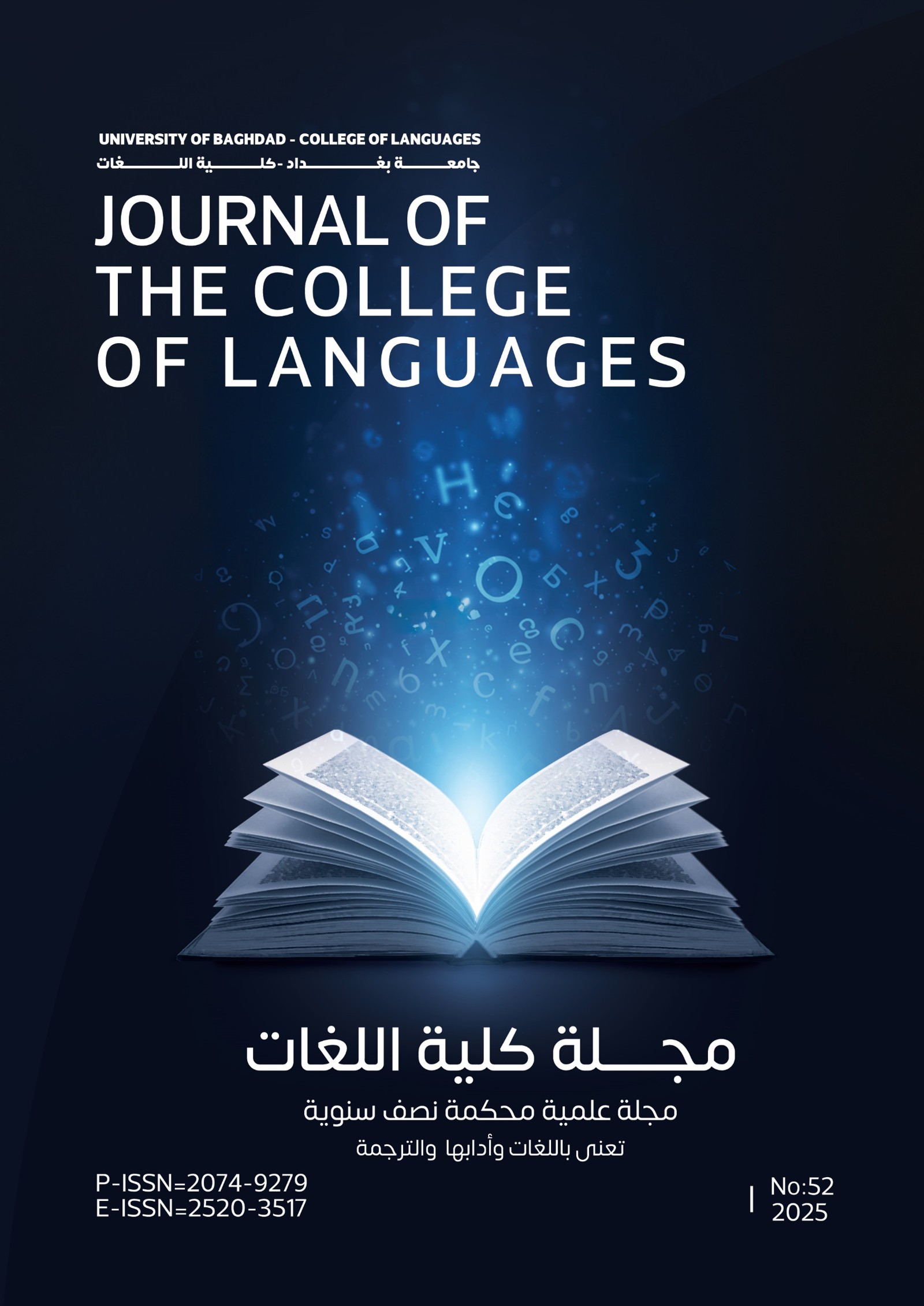LOS ENUNCIADOS INTERROGATIVOS DIRECTOS: ESTUDIO MORFOLOGLCO CONTRASTIVO ENTRE EL ESPANOL Y EL ARABE
Abstract
Los enunciados interrogativos desempeñan un papel de sumo interés en el habla del ser humano en todo el mundo, además de la gran importancia que desempeñan sus distintos enunciados y partículas en abreviar las oraciones y hacer llegar a nuestro interlocutor nuestra intención con pocas palabras, por eso a través de esta investigación vamos a enfocar la luz sobre uno de sus tipos fundamentales "los enunciados interrogativos directos", a través de un estudio morfológico contrastivo entre el árabe y el español, este fue el principal motivo para elegir este tema.
A pesar de que los enunciados interrogativos directos aparentemente no ofrecen mucha dificultad, pero dominar a dicho tipo de enunciados con todas sus divisiones, sus usos y partículas principales por parte de nuestros alumnos y profesores les resultara de mucha utilidad, tanto para entender cuestiones gramaticales, como para resolver cuestiones relacionadas con la traducción del español especialmente si el tema combina las normas gramaticales de dos lenguas distintas y esta es la importancia del trabajo.
Nuestro propósito ha sido además de estudiar este tema intentar ofrecer algo nuevo a través de destacar las características comunes y especiales de cada lengua y esta es la finalidad del trabajo esperamos haberlas logrado.
Abstract
Direct Interrogative Sentence:
Comparative structural study between Spanish and Arabic
The interrogative sentence plays an increasing role in the conversational language all over the world, In addition to the various usages and different expressions in shortening the sentence and getting the purpose to the listener briefly. Therefore, we are going to shed a light on one of its types, namely the direct interrogative sentence through a comparative structural study between Spanish and Arabic. This is the basic motive of choosing this study.
In spite of their being simple apparently, the direct interrogative sentence should be known with all their divisions usages and their basic forms by the students as well as the instructors that will be of great benefit whether grammatically or for an accurate translation of the text, specifically when it is concerned with the grammar of two different languages.
The aim of this study is an attempt at presenting a comparison by picking out the similar and different forms between the two languages.
The study is divided in to the following:
- Defining the term interrogative in both languages generally then discussing the forms of the basic interrogative which can be divided in to direct (or real) interrogative and indirect (or rhetorical) interrogative.
- Shedding light on the big role of the tone of the voice in the oral dialogues of the direct interrogative sentences, the important and specific role of the question marks in writing the direct interrogative sentences in the written dialogue.
- Identifying the common interrogative words and the similarities and differences in both languages.
The study has come to the following conclusions:
- There is a big similarity between Spanish and Arabic in terms of content or form.
- All the words used in the direct interrogative sentences come at the beginning of the sentence.
- The tone of the voice helps to identify the direct interrogative sentences in discourses language like exclamation… etc. whereas the question marks help to identify the direct interrogative sentences.
- The common question words used in both languages are divided according to function in to those related to impersonal and sometimes used for the personal, (Qué / ما) for the impersonal things, (Quién / من) for the personal things, (Cuál / أي) for personal or impersonal things as well as adverbs, (Cuánto / كم) for quantity, (Cuándo / متى) for time, (Dónde / أين) for place, (Como / كيف) for the way of doing something.
The difficulties faced in this study are the following:
- The difficulty of finding Arabic & Spanish resources discussing in details the interrogative sentences, and difficulty of finding the grammar of some common forms whether in discourses language or the other books.
The Recommendations of this study are the following:
- Keep on doing linguistics researches to find out any development in the language or studying new rules, and Keep on doing comparative studies to find out the similarities or the differences among languages and to understand the relationship among languages and how each one affects the other.







